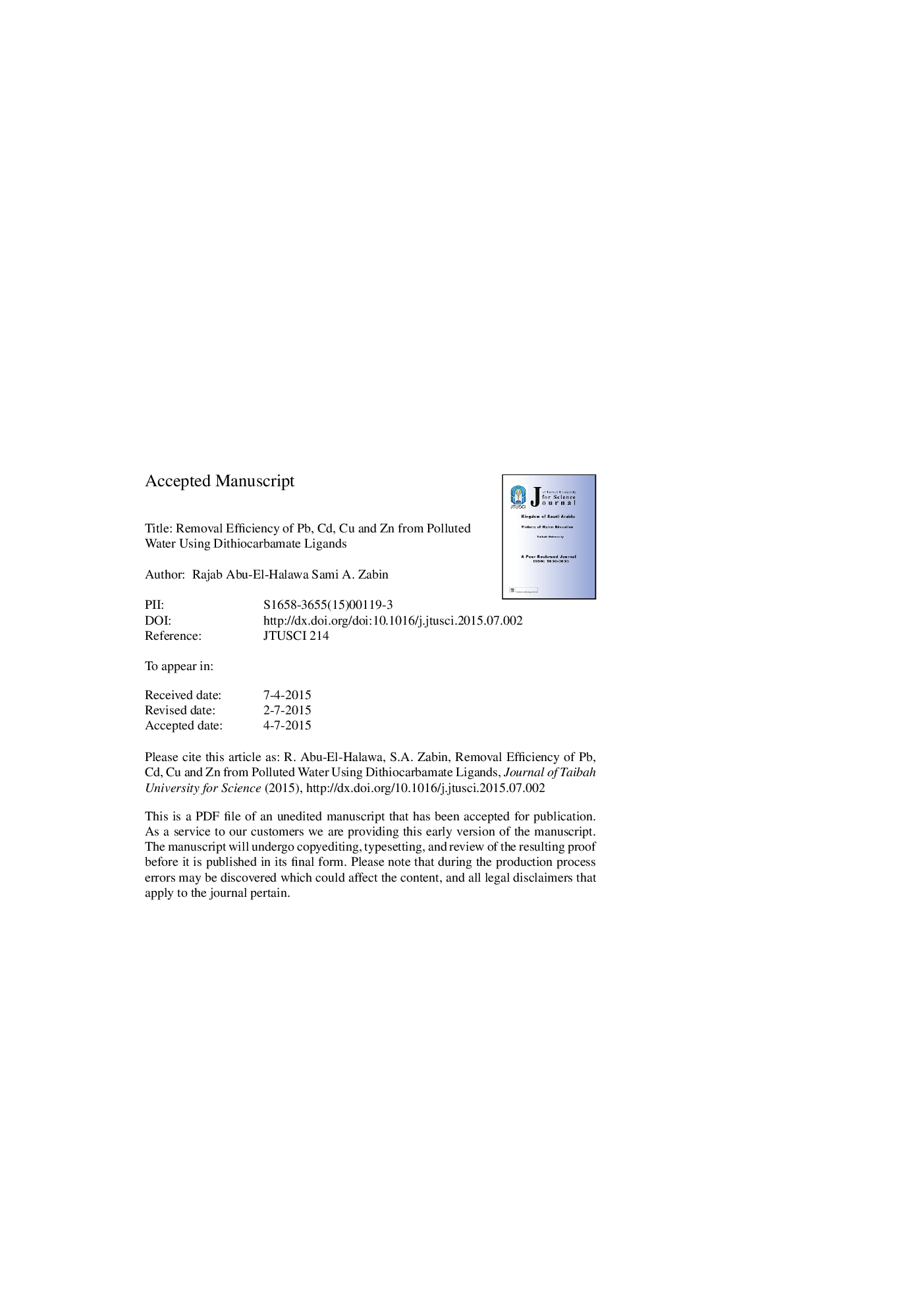| Article ID | Journal | Published Year | Pages | File Type |
|---|---|---|---|---|
| 5143568 | Journal of Taibah University for Science | 2017 | 21 Pages |
Abstract
Presently, there is increased attention and focus on heavy metals, which are becoming one of the most serious environmental problems due to their adverse health effects. These toxic heavy metals are not easily degraded and require removal from polluted water to protect people and the environment. The purpose of this work was to prepare two types of dithiocarbamate ligands, one aliphatic (diethyldithiocarbamate) and the other aromatic (diphenyldithiocarbamate), and to use them as chelators to remove Pb, Cd, Cu and Zn from polluted water. Dithiocarbamates were selected because they have good binding ability and can precipitate metal ions as complexes. The metal removal efficiency is compared between both ligands and also compared to the efficiency of activated carbon in an adsorption process to remove the same metals. The investigation results indicated that the diphenyldithiocarbamate ligand was more efficient in removing the studied metals than the diethyldithiocarbamate analogues. Additionally, the metal removal efficiency of the diphenyldithiocarbamate ligand was more effective than using the activated carbon method.
Related Topics
Physical Sciences and Engineering
Chemistry
Chemistry (General)
Authors
Rajab Abu-El-Halawa, Sami A. Zabin,
